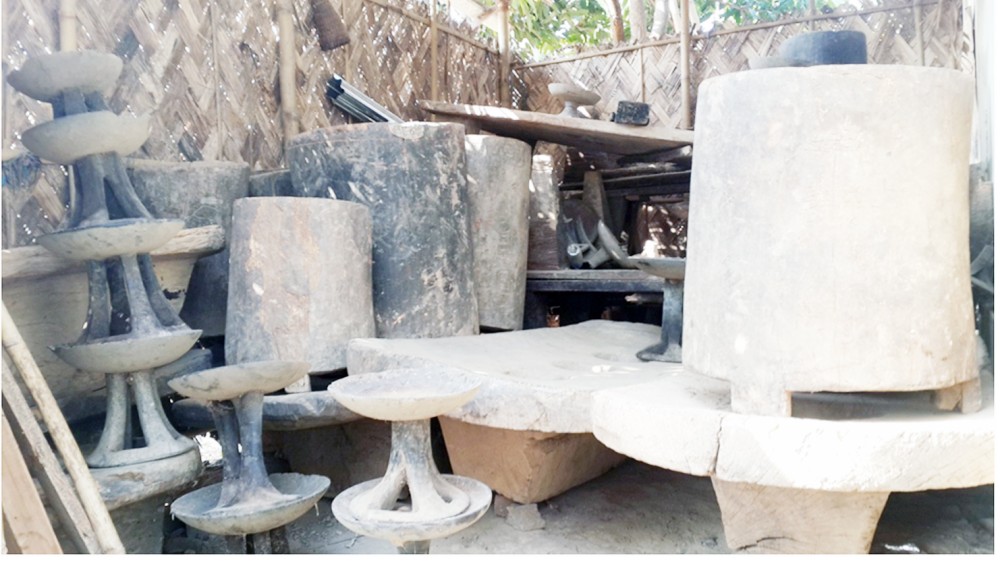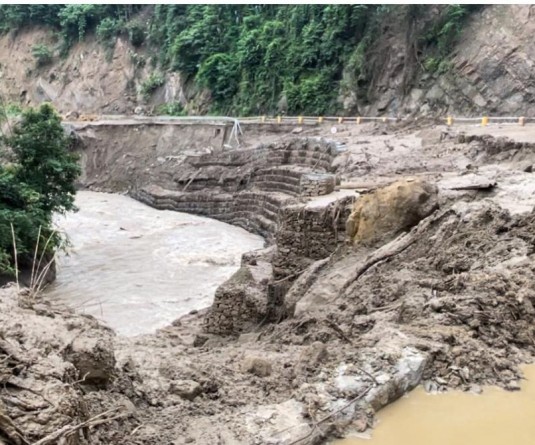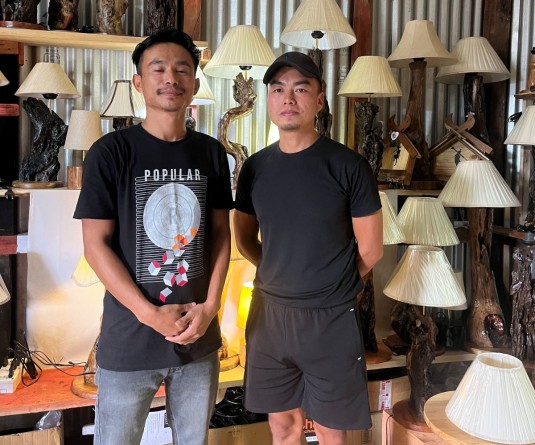A Naga antique dealer’s storeroom is seen here with an array of traditional artifacts.

Cheap, Shiny Imitation vs Moldy Original
Abokali Jimomi
Dimapur | January 24
If you visit some villages that have salvaged traditional objects from the pre/post colonial village-burnings, you will discover moldy storerooms stacked with many items such as the rice-pounding table, beds and bowls - each hand-carved out of a single block of wood.
Sadly their intrinsic and traditional value has diminished. If you offer a shiny aluminum bowl in exchange for an old Asükhu that was passed down three to four generations, villagers will be happy to clear their junk, satisfied with the glittering object offered. The question is whether it is a fair deal.
The traditional “Asükhu”, in Sumi, is a two-in-one dining item; it has legs attached to the large bowl on top that has been chiseled out of one single block of wood. Like the Asükhu, the Apilo Lipa, is a bed craved out of a giant tree trunk. These household items represented traditional art that required expert craftsmanship and also had important social rituals attached to their production process. Entire communities were usually involved in the work as they sang together while dragging the felled tree trunk home from the forest.
A local dealer has sourced items (in the photo) from at least three districts in Nagaland, ready to be transported to a buyer in Delhi. He has been in business for 6 years and knows of another six traders in Nagaland, only two of whom are Naga. According to him, villagers have long been selling off ancient objects to outsiders or few wealthy Nagas. He says, “it is hard to find old objects now; villagers have no use of them so they either chop up the beds and pounding tables for firewood or sell them off.”
While traditional artifacts are highly sought after by others (antique market price vintage beds equaling a marginal Naga farmer’s 100 annual paddy harvests), the general Naga majority in villages and owners of these objects see no value in old “rotting clutter”. The Asükhu-shaped aluminum bowl, a mass-produced imitation of the traditional wooden version, is now ironically a great barter item for the very old wooden originals. Metal imitation, modern and supposedly longer-lasting, seems to have greater value over a 100-year old original. A villager may justify selling his heirloom bed for Rupees 10,000 to buy five mobile phones or a year’s supply of sugar and Everyday Milk Powder all manufactured in other States.
The issue here is not just about uninformed selling or about decorating our houses with rare totems to display opulence and status. It is about the loss of the irrecoverable passage of time these objects represent that survived to narrate our stories. It is about the political, social and economic factors that inspired the designs and patterns creatively and soulfully expressed by artisan-ancestors.
The destruction of traditional knowledge systems and embracing imitation over original logically leads to abandoning unique art forms, and the quintessential understanding of an indigenous group. Our traditional arts and crafts are our intellectual property – our own knowledge system that was developed by many generations of artisans perfecting the process of creating not just an inanimate and functional object, but symbolically depicting and embodying our unique way of life. Our indigenous knowledge systems need to be protected, documented and preserved so these skills traditions can be available to future generations.
In cultures based on oral traditions like the Nagas, these artifacts are priceless repositories of knowledge containing volumes of information about us. They contribute wisdom to the diversity of human cultures around the Earth. By discontinuing their use, while being charmed only by things not made by us, nor having the desire to produce to meet our own needs, we will lose our very essence and could become dependent on aluminum imitations that are mass-manufactured in a sweatshop from another country.





